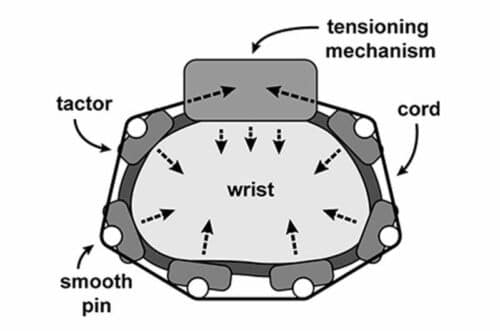Researchers have developed a new device which enables virtual reality (VR) users to experience believable touch sensations.

Metaverse has become the new “dimension” of the 21st century. Everything you have been doing all your life can be re-lived in this virtual world of 0’s and 1’s. But can you really feel it? You can experience things and events but if there is no sense of touch, the ‘reality’ turns into a mirage.
With an eye toward a not-so-distant future where some people spend most or all of their working hours in extended reality, researchers from Rice University, Baylor College of Medicine and Meta Reality Labs have found a hands-free way to deliver believable tactile experiences in virtual environments. This new “multisensory pseudo-haptic” technology uses a combination of visual feedback from a VR headset and tactile sensations from a mechanical bracelet that squeezes and vibrates the wrist.
Haptic refers to the sense of touch. It includes both tactile sensations conveyed through skin and kinesthetic sensations from muscles and tendons. Our brains use kinesthetic feedback to continually sense the relative positions and movements of our bodies without conscious effort. Pseudo-haptics are haptic illusions, simulated experiences that are created by exploiting how the brain receives, processes and responds to tactile and kinesthetic input.
The research showed that users were able to sense varying degrees of stiffness in each of four virtual buttons. To further demonstrate the range of physical interactions the system could simulate, the team then incorporated it into nine other common types of virtual interactions, including pulling a switch, rotating a dial, and grasping and squeezing an object. Researchers said that “Keeping the hands free while combining haptic feedback at the wrist with visual pseudo-haptics is an exciting new approach to designing compelling user experiences in VR.”
Reference : Evan Pezent et al, Multisensory Pseudo‐Haptics for Rendering Manual Interactions with Virtual Objects, Advanced Intelligent Systems (2023). DOI: 10.1002/aisy.202200303






